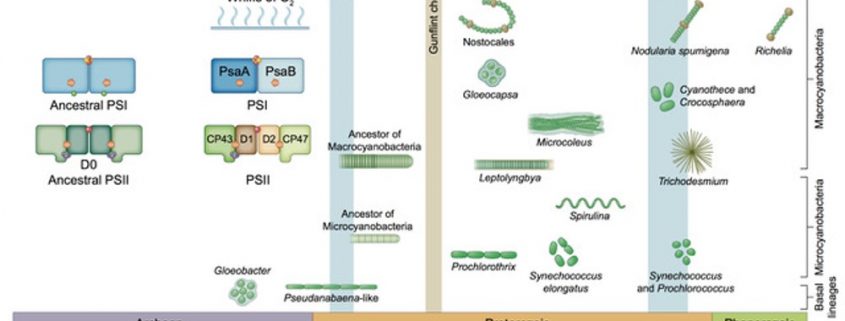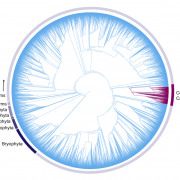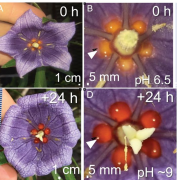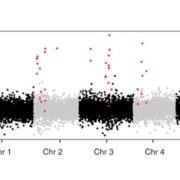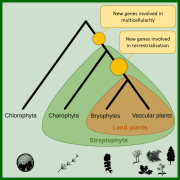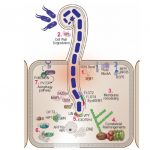On the origin of oxygenic photosynthesis and cyanobacteria (New Phytol)
Photosynthesis occurs in several ways, only one of which releases oxygen as a product. As oxygen-breathing organisms, we are totally dependent on oxygenic photosynthesis, which is restricted to cyanobacteria and green plant plastids. In this review, Sánchez‐Baracaldo and Cardona examine how recent genomic data and improved evolutionary methods have helped to understand the evolution of photosynthetic reaction centers and how they combined to support oxygen production. The most recent age estimates of the photosystem I (PSI) and PSII gene families suggest that some sort of oxygenic photosynthesis was already established 3.0 billion years ago. Although oxygenic photosynthesis is often considered an innovation of cyanobacteria, it is likely that it preceded them and that the most recent ancestor of cyanobacteria was a prototroph already capable of water oxidation. Most of the cyanobacteria diversity appeared after the Great Oxidation Event (GOE; 2.3 – 2.4 billion years ago). (Summary by Cecilia Vasquez-Robinet) New Phytol 10.1111/nph.16249


